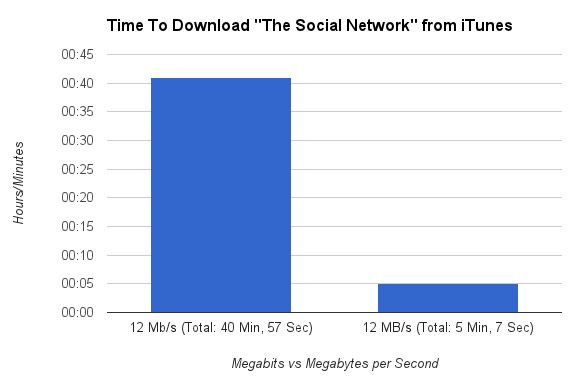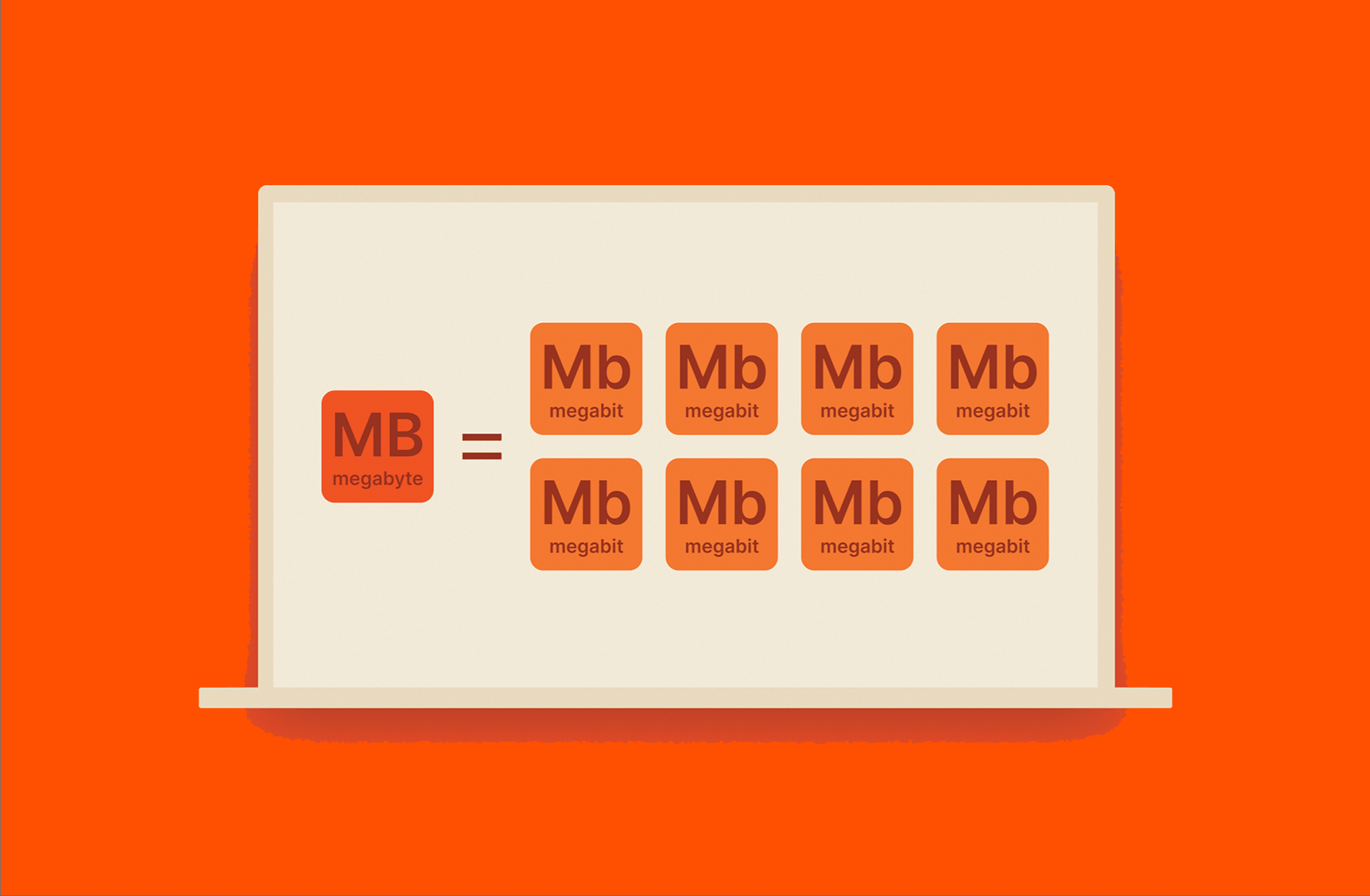Demystifying Megabits Per Second: What Customers Need to Know
Just How Megabits Per Second Influence Your Online Activities
The idea of megabits per second (Mbps) plays a pivotal role fit our on the internet experiences. As digital activities multiply, recognizing the ramifications of Mbps on streaming, video, and video gaming conferencing comes to be progressively essential. Higher Mbps can improve efficiency and decrease interruptions, while insufficient rates might foster aggravation and inadequacy. Examining your household's details demands in connection to these speeds is important, specifically as numerous tools compete for transmission capacity. The subtleties of just how Mbps influences different online activities warrant more exploration, specifically as our reliance on electronic connection continues to progress.
Comprehending Megabits Per Second
When taking into consideration net speed, it's vital to recognize the principle of megabits per second (Mbps), which works as a basic measurement for information transfer prices. This metric quantifies just how much information can be sent over a net connection in one second, giving a clear understanding of performance capacities - Megabits Per Second. For context, one megabit amounts to one million bits, and Mbps is typically used to reveal data transfer for different on-line activities
A greater Mbps shows a quicker internet connection, making it possible for customers to execute tasks such as downloading files, surfing sites, and taking part in online gaming extra successfully. For example, normal surfing needs around 1-5 Mbps, while streaming high-def video might demand 5-25 Mbps. Understanding these needs is essential for figuring out the suitable web rate required for specific tasks.
Additionally, the variety of devices attached to a network can affect general performance. Multiple customers streaming, gaming, or downloading at the same time can stress readily available data transfer, leading to slower rates - Megabits Per Second. Reviewing individual online behaviors and needs is vital in choosing a net strategy that straightens with one's requirements, ensuring a seamless digital experience
Streaming and Buffering Issues
Streaming high-definition content has come to be a staple of modern on-line home entertainment, yet it is typically come with by discouraging buffering concerns. These interruptions can considerably diminish the seeing experience, resulting in dissatisfaction and prospective loss of audience interaction. Buffering takes place when the data transmitted from the streaming solution is not received swiftly enough to maintain a smooth playback, commonly because of inadequate net rate measured in megabits per second (Mbps)

Furthermore, real-time streaming can be influenced by network blockage, which takes place when several devices share the exact same transmission capacity. Optimizing link rate and making sure adequate Mbps is essential for a seamless streaming experience. As streaming services remain to develop, understanding the influence of Mbps on buffering issues continues to be vital for consumers seeking uninterrupted amusement.
Online Video Gaming Performance
The impact of internet rate on on-line tasks prolongs past streaming, substantially affecting on-line gaming efficiency. In competitive pc gaming, low latency and high bandwidth are crucial for a seamless experience. A quick link minimizes lag, enabling players to respond swiftly to in-game events, which can be the distinction in between triumph and loss.
Data transfer, determined in megabits per second (Mbps), plays a crucial function in sustaining several gadgets and video gaming systems simultaneously. Not enough bandwidth can cause dropped connections or minimized game quality, negatively impacting gameplay. As an example, on-line multiplayer games need significant data transfer, especially during peak gaming hours when countless gamers are online.
Hectic first-person shooters demand higher speeds to preserve responsiveness, while turn-based technique video Read More Here games may function fairly well on lower speeds. As on-line pc gaming continues to progress, with boosting visual integrity and even more complicated multiplayer environments, the demand for greater Mbps will just heighten.
Video Clip Conferencing Quality
In today's digital landscape, video conferencing top quality is greatly influenced by web speed, especially in terms of data transfer and latency. Top quality video clip calls require enough bandwidth to transfer sound and video clip information flawlessly. Normally, a minimum of 1.5 Mbps upload and download speeds is visit this site suggested for common meaning video, while high-def video conferencing typically requires at least 3 Mbps.
Latency, or the hold-up in between sending and getting information, also plays a vital function in the customer experience. Higher latency can lead to echo, lag, and disjointed communications, which can impede cooperation and engagement during meetings.
Additionally, numerous individuals in a video conference can stress offered transmission capacity, necessitating also greater rates. Network blockage, usually created by synchronised tasks like streaming or downloading, can additionally deteriorate video clip high quality. Therefore, for organizations depending on video conferencing for remote cooperation, comprehending the connection in between megabits per second and general interaction quality is essential for maintaining performance and boosting online communications.
Picking the Right Web Plan
Selecting an ideal web plan is important for ensuring ideal performance in numerous online activities, specifically in setups that require high bandwidth, such as video clip conferencing and online pc gaming. Megabits Per Second. When taking into consideration a web strategy, it is crucial to evaluate both the rate and information allocation to match your specific use demands
For houses with numerous customers taking part in simultaneous activities, a strategy offering greater megabits per second (Mbps) is recommended. Normally, a minimum of 25 Mbps appropriates for typical streaming and surfing, while plans surpassing 100 Mbps are preferable for more extensive jobs. Furthermore, take into consideration the nature of your online tasks; video conferencing calls for a minimum of 1.5 Mbps post rate, while online gaming might need a reduced latency however regular connection.
It is likewise essential to assess your information cap. Unlimited data strategies can avoid strangling and interruptions, pop over to these guys especially if hefty usage is expected. Lastly, research provider in your area, as accessibility and pricing can differ. By thoughtfully choosing an internet plan customized to your demands, you can enhance your on-line experience, making sure smooth, uninterrupted accessibility to your recommended tasks.
Final Thought
In conclusion, the significance of megabits per second (Mbps) in shaping on-line tasks can not be overemphasized. A thorough understanding of individual or family Mbps needs is essential for picking a proper internet strategy that sufficiently sustains varied online activities and customer demands.

Usually, a minimum of 25 Mbps is ideal for typical streaming and browsing, while plans surpassing 100 Mbps are more suitable for more extensive jobs. Additionally, think about the nature of your online activities; video clip conferencing requires at least 1.5 Mbps post speed, while online gaming may need a reduced latency however regular connection.